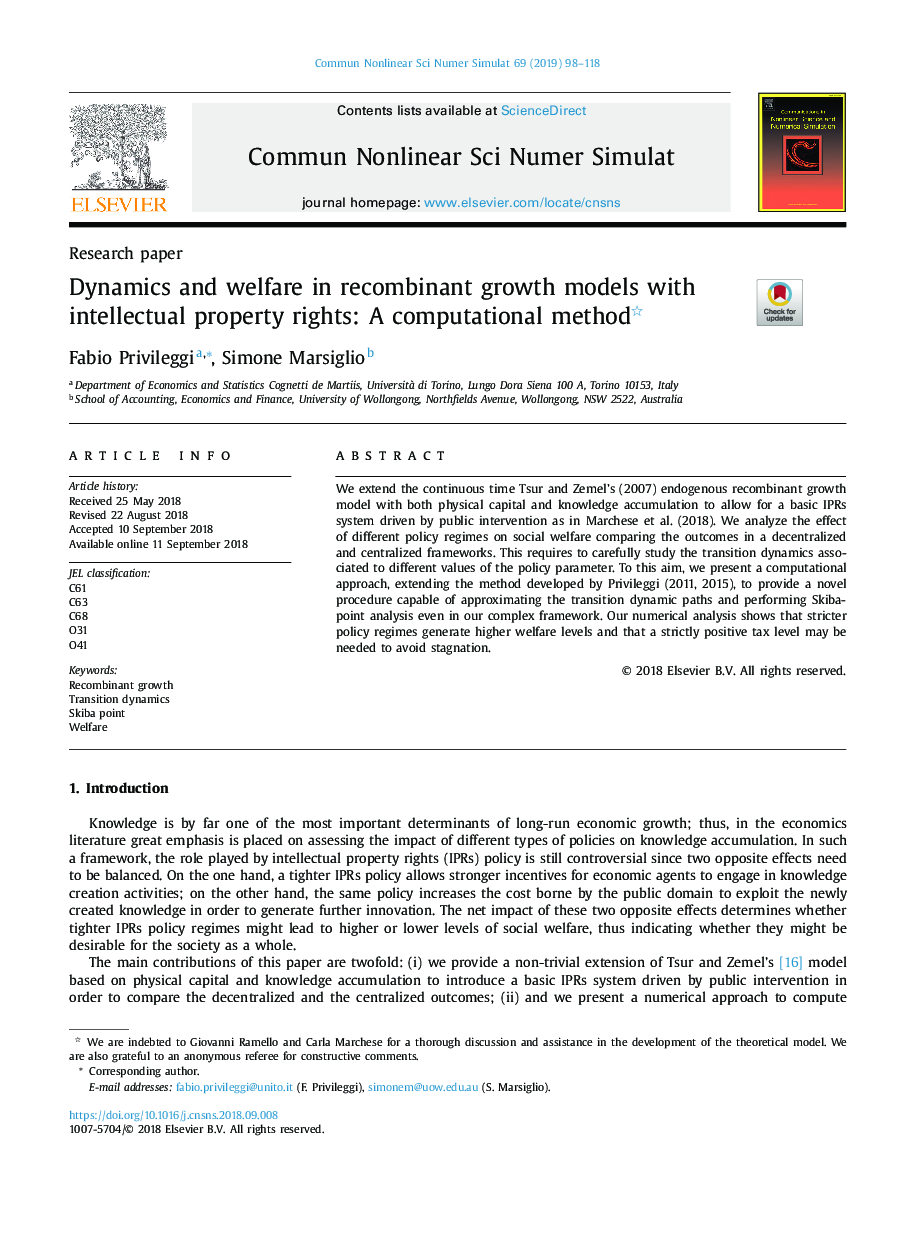| Article ID | Journal | Published Year | Pages | File Type |
|---|---|---|---|---|
| 10226398 | Communications in Nonlinear Science and Numerical Simulation | 2019 | 21 Pages |
Abstract
We extend the continuous time Tsur and Zemel's (2007) endogenous recombinant growth model with both physical capital and knowledge accumulation to allow for a basic IPRs system driven by public intervention as in Marchese et al. (2018). We analyze the effect of different policy regimes on social welfare comparing the outcomes in a decentralized and centralized frameworks. This requires to carefully study the transition dynamics associated to different values of the policy parameter. To this aim, we present a computational approach, extending the method developed by Privileggi (2011, 2015), to provide a novel procedure capable of approximating the transition dynamic paths and performing Skiba-point analysis even in our complex framework. Our numerical analysis shows that stricter policy regimes generate higher welfare levels and that a strictly positive tax level may be needed to avoid stagnation.
Related Topics
Physical Sciences and Engineering
Engineering
Mechanical Engineering
Authors
Fabio Privileggi, Simone Marsiglio,
